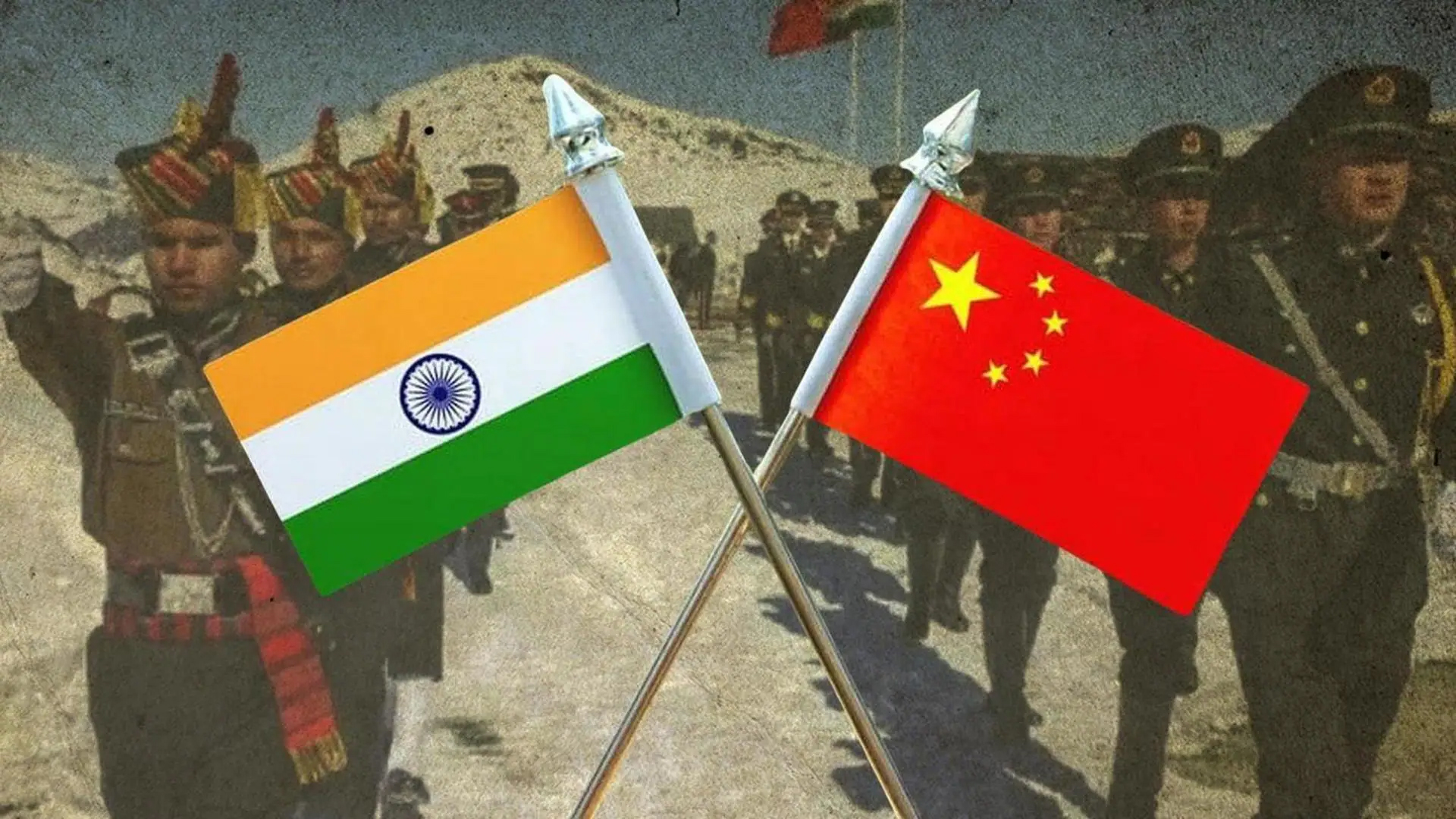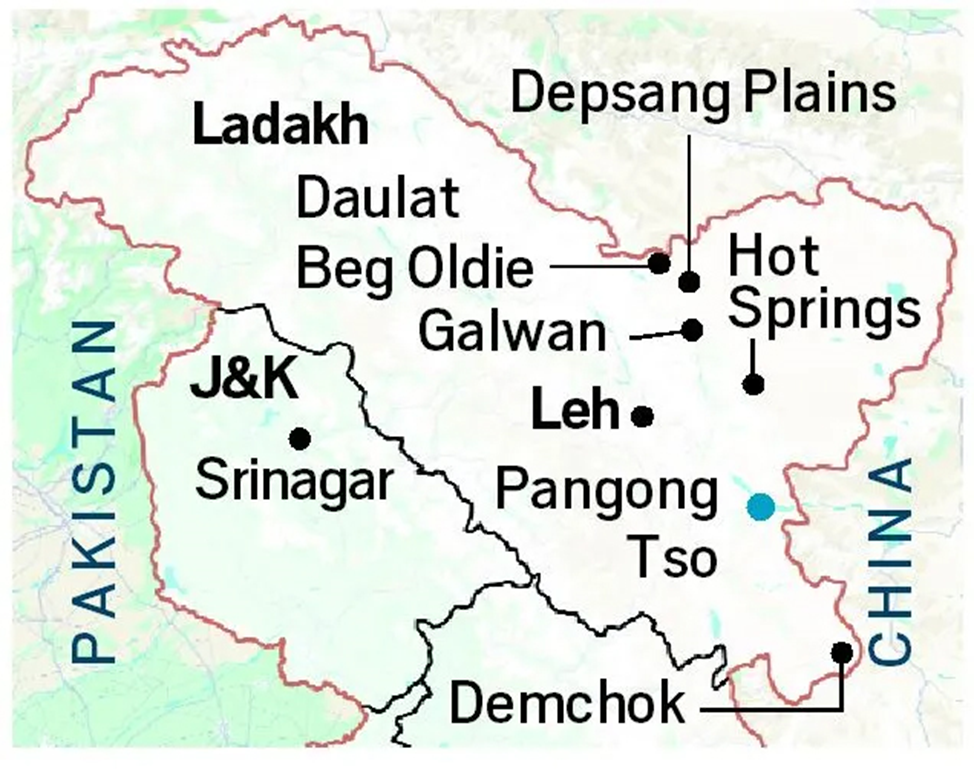Context:
Recently, Indian Foreign Secretary Vikram Misri announced that India and China had reached an agreement on patrolling arrangements along the Line of Actual Control (LAC). This agreement aims to resolve border issues stemming from Chinese transgressions in 2020. However, concerns persist regarding long-standing “legacy disputes” in eastern Ladakh, particularly at Demchok and Depsang.
- The LAC, established post the 1962 Sino-Indian War, remains a contentious area with no clearly demarcated border. The absence of a physical line complicates border management, making patrolling critical for both nations. Patrolling rights allow troops to assert their presence in disputed areas, and the recent agreement aims to restore these rights in the Depsang Plains and Demchok regions.
Agreement Details:
- Restoration of Patrolling Rights: The agreement permits Indian troops to patrol specific points (PP 10 to 13) in the Depsang Plains and the Charding Nullah in Demchok. This restoration signifies a return to pre-2020 practices, where both nations had established patrolling norms. The agreement is seen as a foundation for future disengagement, de-escalation, and demilitarization along the border, where approximately 50,000 to 60,000 troops from each side are currently stationed.
- Conditions for Engagement: The terms set forth in the agreement emphasize restraint and communication during face-to-face encounters to prevent escalations. Specific guidelines from the 2005 border pact outline expected troop conduct during confrontations, urging both sides to maintain courtesy and avoid provocative actions.
- Progress and Monitoring:Officials have indicated that implementation of the agreement could begin within a week to ten days. The Foreign Secretary highlighted the importance of monitoring to avoid a recurrence of the clashes witnessed in 2020. This involves careful oversight to ensure both nations adhere to the agreed protocols, reinforcing a “trust but verify” approach.
Implications of the Agreement for India-China Relations:
1. De-escalation of Tensions
The agreement represents a critical step towards de-escalation in a region where both nations have maintained a heavy military presence. This development reduces the likelihood of confrontations similar to those seen in Galwan in 2020, fostering a more stable environment along the border.
2. Restoration of Diplomatic Relations
If successfully implemented, the agreement could facilitate the resumption of higher-level diplomatic engagements between India and China, particularly in forums such as BRICS and the Shanghai Cooperation Organization (SCO).
3. Economic and Trade Relations
Normalization of military interactions will likely pave the way for improved economic ties between the two countries. Potential developments include the resumption of flights and an increase in Chinese investment in India, enhancing bilateral trade.
4. Influence on Regional Stability
A stable India-China relationship could set a positive precedent for resolving other territorial disputes in Asia. It may also alter perceptions of China’s border policies among its neighboring countries, encouraging a more collaborative regional environment.
5. Path for Long-term Territorial Dispute Resolution
The LAC agreement lays the groundwork for addressing 'legacy border issues' such as those in Depsang and Demchok. Successful negotiations on these matters could significantly advance the resolution of the broader India-China border dispute.
Challenges in Resolving the India-China Border Dispute:
Despite the progress represented by the LAC agreement, several challenges remain in fully resolving the India-China border dispute:
1. Historical Disagreements and Legacy Issues
The border dispute has a complex history dating back to the 1962 war. The presence of 'legacy issues' complicates effective resolution, as unresolved disputes over areas like the Depsang Plains and Demchok persist.
2. Unilateral Chinese Actions
China's attempts to unilaterally alter the status quo along the LAC, including military incursions into Indian territory, have escalated tensions and hindered resolution efforts in the past.
3. Strategic Concerns and Nationalistic Sentiments
The strategic importance of the disputed territories, coupled with strong nationalistic sentiments on both sides, makes it challenging for either government to make concessions or compromises.
4. Military Build-up and Infrastructure Development
The continued military presence and infrastructure development by both countries along the LAC add complexity to resolving the dispute, making it harder to reach a lasting agreement.
5. Lack of Trust and Mutual Suspicion
The deadly clashes in the Galwan Valley in 2020 have severely impacted trust levels between India and China. This lack of trust creates a volatile environment, complicating long-term conflict resolution efforts.
6. Imbalance in Buffer Zones
Establishing buffer zones during the disengagement process has resulted in India losing more territory than China. This imbalance creates further tension and complicates conflict resolution.
Indian Efforts to Counter Chinese Influence:
1. Strategic Global Alliances
· QUAD: The Quadrilateral Security Dialogue (QUAD), comprising India, the United States, Japan, and Australia, serves as a counterbalance to China’s influence in the Indo-Pacific. Its objectives include securing maritime routes and enhancing collective security through joint military exercises.
· I2U2: This grouping, comprising India, Israel, the UAE, and the United States, focuses on enhancing economic ties and addressing shared interests. It aims to strengthen trade and investment while exploring joint projects in areas such as renewable energy and food security.
· INSTC (International North-South Transport Corridor): Initiated in 2000 by Russia, India, and Iran, the INSTC facilitates trade from the Indian Ocean to northern Europe, providing an alternative route to counter China’s Belt and Road Initiative (BRI).
· IMEC (India-Middle East-Europe Economic Corridor): This corridor aims to establish multi-modal connectivity from India to Europe, enhancing India’s influence in global trade networks by providing a viable alternative to Chinese-controlled routes.
2. The Necklace of Diamonds Strategy
· In response to China’s “String of Pearls” strategy, India has adopted the “Necklace of Diamonds” strategy, which includes strengthening naval bases and building military alliances with countries like Vietnam and Indonesia to secure maritime interests.
3. Enhanced Border Infrastructure
· India has accelerated infrastructure development along its border with China, with initiatives from the Border Roads Organisation (BRO) enhancing connectivity in sensitive regions like Arunachal Pradesh and Ladakh. Improved infrastructure allows for rapid troop mobilization and logistical support.
4. Strengthening Ties with Neighbors
· India’s approach also involves fostering strong regional partnerships, particularly in South Asia. Initiatives like collaboration with Bhutan and agreements for power exports with Nepal aim to promote regional stability through developmental projects.
|
Key Terminologies in the India-China Context
|
In conclusion, while the recent India-China LAC agreement marks a significant step towards stabilizing bilateral relations, the challenges ahead remain substantial. Continued dialogue and strategic cooperation will be essential for a lasting resolution to the complexities of the border dispute.
|
Probable questions for UPSC Mains exam:
|









